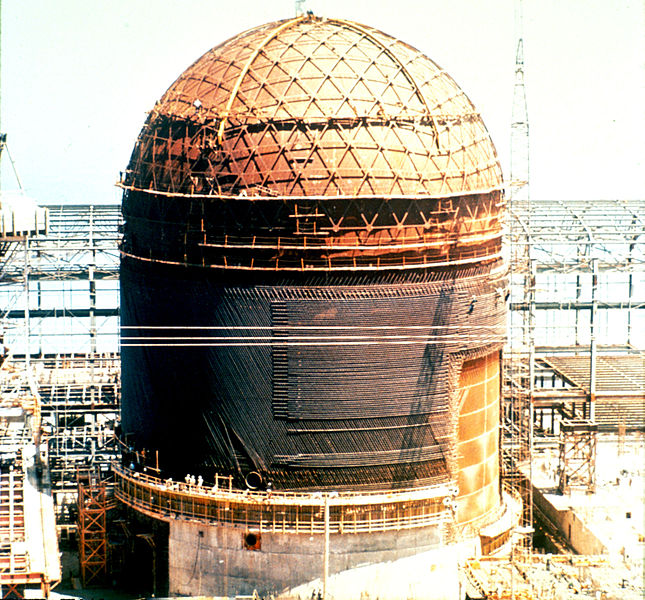Environmental damage, energy prices, accidents, accumulating waste, extreme weather, availability of cooling water, and other problems are threatening the viability of using nuclear energy to generate electricity. Various metaphors have been used recently in discussing what is happening to the world nuclear industry in general and the United States nuclear industry in particular.
A book that just came out used the metaphor of roulette to refer to the gamble that the world is taking with the risk of another major nuclear accident. I don’t know if that is really applicable because the odds of hitting the winning number in roulette are pretty bad. Maybe it should be Russian roulette. We know that another accident is coming but we don’t know exactly when.
An article just published today suggests that the situation is like a bunch of dominos stood on edge. The writer says that more and more dominos are falling as old nuclear power plants are being shut down because they are non profitable or they are falling a apart and are too expensive to fix. The problem with this metaphor is that while the shutting of one plant does have an effect on the viability of other plants, one plant shutting down does not cause the one next to it to be shut down
I have personally referred to the situation in the nuclear industry as being like a house of cards. The whole edifice is shaky and the disturbance of individual parts may cause the whole structure to fall apart if and when a sufficiently big shock occurs. While this might be true, it would take something really major like the nuking of a city or the spectacular failure of a nuclear power plant that required the evacuation of a major city to deliver such a fatal shock.
Another metaphor would be that of a death spiral. This is a term used to indicate that as one thing leads to another the system becomes less and less viable until it perishes. That may be a little too dynamic and kinetic for what is happening to the nuclear industry. The original situation that gave rise to that metaphor is that of an airplane that is spiraling down to crash and cannot pull out of the dive. That does not really seem to be a good fit for a metaphor.
Another better metaphor might be that of an aging person. As a person gets older and older, regulatory systems gradually break down and stop doing their job. Organs deteriorate, joints become less flexible, etc. There can be a fatal event like a heart attack but if that does not happen, the whole system degrades over time until it just cannot continue to function. That is what is happening to the nuclear industry. On a number of different fronts, things are wearing out and breaking down. Minor crises and major crises arise which require complicated and expensive actions to repair. The industry is aging and there does not seem to be sufficient motivation and resources to renew it. It would appear that it is only a matter of time before nuclear energy is retired as a source of electrical power generation.



